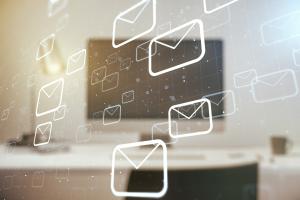
Leveraging Marketing Automation to Enhance Customer Experiences

If you aren’t familiar with marketing automation, you can review our previous post on Defining Email Marketing and Marketing Automation. But marketing automation, by definition, automates manual tasks that occur with email marketing, mobile notifications, push notifications, SMS campaigns, social media and landing pages. Imagine the free time your team would have if the process to launch a multichannel campaign was now automated!
With a more efficient way to manage and execute campaigns, marketers could focus more on the strategy behind the campaign in terms of who their target audiences are and how they’re shaping experiences for each unique touchpoint.
Now don’t get me wrong, there will be time needed to set the campaign up with the correct workflows, but once that’s done, the tool handles the execution of the campaign. And with dynamic segmentation, new contacts are added to the campaign automatically, with no involvement for the marketing team.
With the campaigns executing automatically, it also frees up the team to focus on assessing how well the campaign is performing at each step of the workflow — therefore optimizing the campaign in real time. Campaign assessment and optimization is so important, but it typically takes so much work to launch the campaign that there’s usually not much time to analyze and optimize it - especially not in real-time. With a data-driven approach to marketing and open, intelligent marketing automation technology, marketers gain insights into what messages resonate with customers while the tool takes care of executing.
As you switch your marketing team’s focus to more strategy and analytics-based functions, you need to make sure you have the right people in place to handle these higher-level duties. And they typically aren’t the same person.
Strategy requires someone that can see the big picture of what you are trying to accomplish and then break that down into smaller actions, considering all touchpoints and channels. Deriving valuable insights from analytics requires someone that can look at the data and recommend ways to optimize and improve the customer experience. The strategist focuses on a hypothetical assessment of what they think will be the best experience for the customer, while the analyst refines the strategy based on actual results and data. Both roles are critical, but different, so be sure to assess if you have the right people on the team to accomplish both and technology that allows data to be accessible and easily understandable across your entire organization. Before your organization can turn data into successful campaigns, you need to agree upon a single, standardized source of all your customer data points and understand how all of this information fits within the context of your larger customer experience.
Building Strategic Marketing Workflows
We’ve established that marketing automation is most efficient when the campaign workflows are well-thought out and set up properly. To do this, you need a good strategy that considers all the touchpoints and activities that could happen within a single customer journey. Start by mapping out the ideal customer journey and remember, these journeys are hypothetical pathways informed by customer data and past experiences.
- Identify each step of the journey. If you don’t know where to start, then just begin with a standard customer journey lifecycle like the one illustrated below.
- For each step, identify what the goal is and what actions are needed to achieve the goal.
- Consider what content you have that can help get contacts to the desired goal.
- Once you’ve identified all the actions you want contacts to take, go back to the start of your journey and identify 1-2 things you can do if the contact doesn’t take that action.
- Finally, identify what you will do with the contact once they’ve completed the campaign, but also what you’ll do if the contract is non-responsive.
Let’s look at a simple lead nurture campaign to illustrate a typical workflow. We have two main stages — Awareness and Conversion. The first goal is awareness and will be measured based on email opens and click-through rates. The second goal is conversion, which will be measured by a prospect booking a free consultation.
In this example, we have two emails that are sent to generate awareness — one on some tips and tricks and one on an industry report. The third email is to hook the prospect and get them to book a free consultation. But the workflow doesn’t stop with just the three emails. Once a prospect books a free consultation, there are several actions that take place.
- The prospect gets points added to their account — therefore increasing their lead score
- A consultation confirmation is sent based on the prospects preferred method of communication (email or text)
- An internal notification is sent to the booking coordinator informing them of the latest consultation booking
- An appointment reminder is sent a day before the appointment
- A follow-up email is sent after the appointment with a survey
In this example, there are at least five different touchpoints with the prospect that would typically be done manually, but with marketing automation, the workflow is set up in less than an hour and runs automatically for anyone new in the “Nurture List” segment. So if someone new gets added to the “Nurture List”, this campaign will begin.
Lastly, you’ll notice the workflow includes a path in red if the contact doesn’t book a meeting. In this example there’s a follow-up action to send an email on the “Benefits of Service” but more actions could be added to try and continue nurturing the lead.
Optimizing Marketing Campaigns Based on Customer Data
We’ve outlined the strategy and initial setup of the workflows but imagine the workflow has been running for a month, now you have real data to support your hypothetical journey. After looking at the analytics, you learn you have a 20% clickthrough rate on the first email, but when it comes to the second email you only have a 5% clickthrough rate. Now you can adjust the workflow in real-time to try and optimize the campaign. Maybe you try a different piece of content in the second email — or better yet, do an A/B test to see what may resonate better. The data can now better inform the campaign in order to optimize it.
This is a very simple lead nurture example but similar campaigns can be created for existing customers with loyalty programs or requests for feedback. The strategy and process is the same for complex, multichannel campaigns as well.
Tracking open rates and clickthrough rates is pretty standard but with marketing automation, you have the ability to gain first-party behavioral data as well. You can track what is being viewed on landing pages or social media channels and you can gather relevant data through surveys or forms. Based on this behavioral data, new drip campaigns could be created. For example, a marketing automation platform with the ability to leverage customer data across multiple touchpoints and moments in time from capturing leads through landing pages and forms to automated link tracking within emails, helps teams assess that they are the right message to the right people at the most appropriate time to grow their customer relationships and drive continued conversions.
Imagine the possibilities if you leveraged behavioral data to include personalized dynamic content in your campaign. Especially with the increased value of first-party data and interactions with marketing, having an immediate view into customer characteristics such as the time spent on certain sites, the number of loyalty program subscribers, the device type customers use can help marketers build more nuanced segments that they can then apply to inform their next campaign.
Knowing what products or services a contact viewed would be great data to leverage for product recommendations to cross-sell and up-sell your customers. Or if you knew a contact clicked on a link or social post around a given topic, you could create a workflow to engage them with relevant content specific to that topic. For example, if a contact clicked on a link for a product, they could be added to a campaign designed to educate the contact on the product and encourage them to sign up for a free demo. And if they registered for the demo, then you could increase their lead score and move them into a new campaign focused on getting them to buy the product.
Marketing automation gives marketers the power to spend less time thinking about how to build and deliver campaigns, so they can spend more time on strategies to make every campaign more effective and offer a better customer experience. If done correctly, the campaigns will help build trust with prospects, enhance existing relationships with customers and build loyalty.
To learn more on how marketing automation can help marketers work smarter and design more impactful customer experiences, come join Acquia for an Advanced Mautic Training on Tuesday, June 15, ahead of the Mautic Global Conference. Register here to learn the best practices for advanced segmentation.


